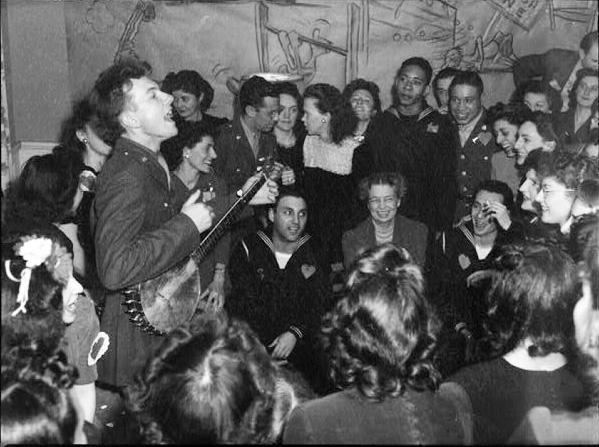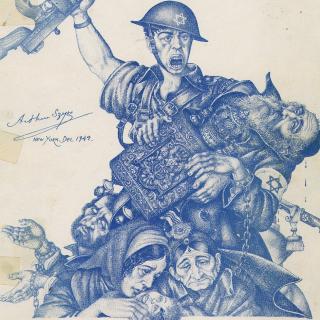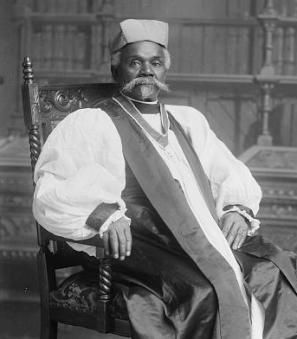Pete Seeger in Washington
Pete Seeger was a performer whose art was intertwined in close harmony with a slew of social causes, ranging from civil rights and the organized labor movement to environmentalism. As he once wrote, "Music, as any art, is not an end in itself, but is a means for achieving larger ends." While Seeger lived most of his life in upstate New York, Seeger's twin passions for music and activism often brought him to Washington, where his calm eloquence and forthrightness gave him influence in the White House — and also subjected him to peril.
In the late 1930s, after dropping out of Harvard University (where he had been a classmate of future President John F. Kennedy), Seeger came to Washington to work for musical historian and preservationist Alan Lomax at the Library of Congress Archive of Folk Song. Part of Seeger's job was to assist Lomax on trips where he recorded African-American and white hillbilly folk music. Seeger's two-year stint at the Smithsonian had a powerful formative influence upon him. As music historian David Dicaire has written: "His journeys with Alan Lomax taught him much, and in turn, Seeger passed on this knowledge to everyone he encountered." Lomax also encouraged Seeger to become a performer, and he eventually began performing on the Lomax-produced nightly CBS radio show Back Where I Come From, along with performers such as Burl Ives and Woody Guthrie.
Seeger went on to perform with Guthrie in the Almanac Singers, a politically left-leaning group whose songs backed the labor movement but also sometimes tweaked the Roosevelt Administration. As Seeger biographer Allan W. Winkler notes, one song, "The Ballad of October 16," attacked the military draft imposed by the government in the runup to World War II. (A sample of the lyrics: "Oh, Franklin Roosevelt told the people how he felt / We damn near believed what he said / He said, 'I hate war and so does Eleanor / But we won't be safe till everybody's dead.") That and other songs apparently irritated President Franklin D. Roosevelt, but First Lady Eleanor Roosevelt was amused by the group's cleverness. She actually arranged for Seeger and other musicians from Lomax's radio show to perform at the White House at an event called "An Evening of Songs for American Soldiers" in March 1941.
Seeger was drafted into the Army in 1942, but he crossed paths with Eleanor Roosevelt in Washington again in 1944, when he performed at a Valentine's Day dance for the Congress of Industrial Organizations canteen. The event was racially integrated, a daring move at the time, and the First Lady — a champion of desegregation — was an honored guest.
In 1946, Seeger and Lee Hays, a former member of the Almanac Singers who rejoined him in the Weavers, gave a seminar called "music for action" at the School of Political Action Techniques, a Washington training program run by New Deal progressives.
In 2009, Seeger appeared at a concert held at the Lincoln Memorial to honor incoming President Barack Obama. Joined by Bruce Springsteen, Seeger led the crowd in a rendition of Woody Guthrie's "This Land is Your Land." Even the President-elect himself joined in the singing. But as the longtime rebel singer ascended to the apex of Washington respectability, he made sure to include two additional verses of Guthrie's song, ones that pointed out a line of impoverished Americans in a Depression-era welfare line. "As they stood there hungry, I stood there asking, Is this land made for you and me?" Seeger sang. He was a man who could not resist speaking truth to power.






![Sketch of the mythical fuan by Pearson Scott Foresman. [Source: Wikipedia]](/sites/default/files/styles/crop_320x320/public/2023-10/Goatman_Wikipedia_Faun_2_%28PSF%29.png?h=64a074ff&itok=C9Qh-PE1)











